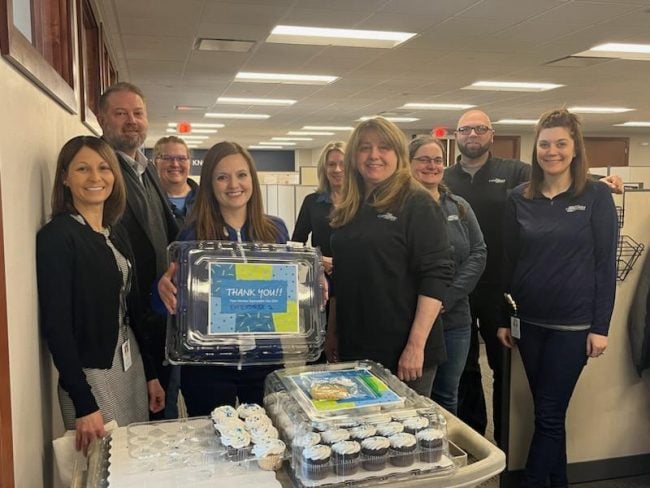FASB's guidance for estimating expected credit losses, ASU 326,is not definitive in its requirements for credit unions' allowancefor loan and lease losses. The good news, then, is that it isunlikely NCUA examiners will ask for immediate answers as to howyour credit union will calculate the reserve under CECL.
|However, even if methodology decisions are a future task forcredit unions, institutions do need to tackle loan-level datacollection now as a first step toward compliance underfuture GAAP.
|Data adequacy starts with evaluating data-collection methodsavailable to the credit union, determining the quality of data thatis being collected and filling any gaps that areidentified.
|Data Collection Methods
|Generally, credit unions will look to one of three methods forcollecting and archiving loan information.
|
Considerations for Each Method
|1. Limited Method: In this model, the credit union leverages itscore system(s) to capture data. Most likely, it is not a viableapproach for most core systems due to limited data storage, usuallya set number of trailing months or quarters.
|In my experience, it can be common for a credit union to storeloan data in different places – mortgages in one system, auto loansin another, etc. While that practice may streamline lendingfunctions, it can make it more difficult for the credit union tocoordinate with all of its database providers on archiving limits,if there are any.
|2. Static Method: Here the credit union builds an internaldatabase and saves data from its core system(s) periodically, orsaves month-end “trial balances” in Excel worksheets. This optionpreserves flexibility for the credit union later in the project asthe institution can store as much or as little data as it desires.However, the static method might require IT resources that theinstitution does not have. Can the credit union's IT team writereports from all the data sources? Is there a secure yet accessibleplace to store those files? How easily can this data be analyzed?The institution will also have to consider consistency andcoherency of the data, perhaps building a data dictionary toprescribe formatting, labeling and file maintenance.
|3. Dynamic Method: In this option, the credit union partnerswith a technology vendor to refine data aggregation policies anddevelop the archiving system for storing data. Utilizing thismodel, the credit union could reduce risk by collaborating with anexperienced vendor, and the institution could maintain flexibilityfor reporting and scenario building.
|For each of these options, credit unions can also run a seriesof tests on their loan data to ensure the information going intothe archive will be meaningful and usable in future for CECLcalculations. By using some of these suggestions, credit unions canavoid “garbage in, garbage out.”
|Data Adequacy Checklist
- The data is labeled meaningfully and consistently;
- The data file does not contain duplicate fields, rows,identifiers or entities;
- There are no inconsistencies in how values are truncated (if atall);
- Data is stored in the right format for calculations;
- Files extracted from the core system are stored as the rightfile type and stored in the right, secure location;
- File creation is automated instead of a manual process;
- Data is reliable and standardized throughout theinstitution;
- Data fields are standardized and governed to ensureconsistency;
- Data storage does not have an archiving time limit;
- Data files are in an accessible format (not PDF); and
- The archiving function captures all the data points required toperform a range of robust CECL methodologies.
Filling Data Gaps
|If credit unions identify particular gaps, there are a fewoptions from which credit union management can choose in order toresolve. First, institutions can partner with their coreprovider(s) and other data warehouse providers to modify storagelimits. Secondly, they can build internal systems that meet thesedata-capture needs and bridge credit union departments. Or, theycan work with an ALLL automation provider to optimize theirloan-data practices.
|
 Danny Sharman is a risk management consultant forSageworks. He can be reached at 984-242-2614 [email protected].
Danny Sharman is a risk management consultant forSageworks. He can be reached at 984-242-2614 [email protected].
Complete your profile to continue reading and get FREE access to CUTimes.com, part of your ALM digital membership.
Your access to unlimited CUTimes.com content isn’t changing.
Once you are an ALM digital member, you’ll receive:
- Critical CUTimes.com information including comprehensive product and service provider listings via the Marketplace Directory, CU Careers, resources from industry leaders, webcasts, and breaking news, analysis and more with our informative Newsletters.
- Exclusive discounts on ALM and CU Times events.
- Access to other award-winning ALM websites including Law.com and GlobeSt.com.
Already have an account? Sign In
© 2024 ALM Global, LLC, All Rights Reserved. Request academic re-use from www.copyright.com. All other uses, submit a request to [email protected]. For more information visit Asset & Logo Licensing.









